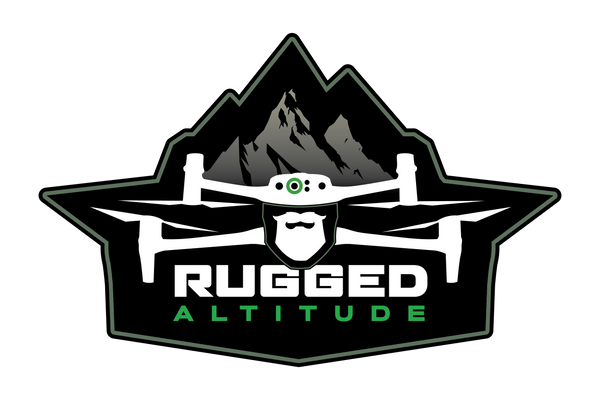Case Study: Successful Wildlife Recovery Missions with Drones
Share
In recent years, the integration of drone technology into wildlife management and conservation efforts has revolutionized how we approach wildlife recovery missions. At Rugged Altitude, we pride ourselves on utilizing specialized drone services to ensure the successful recovery of wildlife in distress. In this case study, we will delve into several successful missions conducted by our expert team and highlight the benefits that drones have brought to wildlife recovery, wildlife assessment, and property management.
Understanding the Challenges of Wildlife Recovery
Wildlife recovery often involves searching for injured, lost, or stranded animals in challenging terrains such as dense forests, mountainous regions, and vast open plains. Traditional recovery methods can be labor-intensive, time-consuming, and can often distress the animals further. Unmanned Aerial Vehicles (UAVs), commonly known as drones, offer a solution by providing unparalleled aerial support where ground access may fall short.
Case Study 1: The Rescue of an Injured Elk
One of the most impactful missions we undertook was the rescue of an injured elk in a remote mountainous terrain. Local wildlife authorities were alerted to an elk struggling with a leg injury, but the location made it nearly impossible for ground teams to reach the animal safely.
In this case, we deployed our thermal imaging drones that were equipped with advanced sensors to pinpoint the elk's precise location without disturbing its environment. The drone's capabilities allowed us to soar above the rugged landscape, locating the elk within minutes. The captured thermal images revealed exactly where the elk was resting, providing the ground team with the necessary information to reach it with minimal stress to the animal.
Once the ground team arrived, they were able to efficiently administer medical treatment, thanks to the tailored guidance provided by our aerial reconnaissance. The elk was subsequently stabilized and successfully released back into the wild. This mission highlighted not only the efficiency of drones in tracking wildlife but also how they can reduce the stress placed on animals during critical recovery operations.
Case Study 2: Monitoring Sea Turtle Nests
In another compelling case, our team was tasked with assessing sea turtle nests along a coastal stretch prone to human interference and natural degradation. With the nesting sites often located in hard-to-reach areas, the threat to these vulnerable populations was ever-present.
Using drones equipped with high-definition cameras, we conducted aerial surveys over the nesting beaches. The drones allowed us to cover extensive areas quickly and gather crucial data regarding the number of nests, locations of existing nests, and any signs of predation or disturbances. Our aerial assessments revealed new nesting sites and provided evidence of successful hatchling emergence trends.
This mission underlined the importance of drone technology in wildlife assessment and the vital role it can play in conservation efforts. The data collected enabled researchers to implement better management strategies and improve the chances of survival for these endangered turtles.
Case Study 3: Habitat Restoration and Management
Property management for wildlife habitats can be a complex process. One of our projects involved a large habitat restoration initiative aimed at revitalizing a previously degraded forest area. Ground surveys for assessing biodiversity, flora, and fauna can sometimes be inefficient, and results can vary greatly depending on the methodology used.
Through drone technology, we were able to manage and survey the property efficiently. Our drones collected aerial imagery that provided a comprehensive overview of the landscape. We mapped out areas requiring immediate attention and restoration, monitored changes in vegetation over time, and identified potential hazards that could impact wildlife habitat.By employing our drone services, we improved the effectiveness and speed with which the restoration project could proceed. This case showcased how drone technology can enhance property management tactics and provide clear directions for ecological restoration initiatives.
The Advantages of Drones in Wildlife Recovery Missions
The use of drones in wildlife recovery and assessment has multiple advantages:
- Access to Difficult Terrain: Drones can easily access regions that are typically hard or unsafe for humans to reach, such as mountains, bushy terrain, or wetlands.
- Efficiency and Speed: UAVs can cover extensive areas in a fraction of the time it would take to conduct a ground search.
- Minimized Disturbance: Drones are quiet and non-invasive, allowing them to monitor wildlife without causing stress or disruption.
- Advanced Technology: Equipped with thermal and high-definition cameras, drones can assess conditions accurately and yield high-quality imagery for data analysis.
- Cost-Effective Solutions: Drone operations often require fewer resources than traditional methods, ultimately saving time and money while delivering superior results.
Future of Drone Services in Wildlife Conservation
The future of drone services in wildlife conservation and recovery looks promising. As technology advances, we expect to see even more innovative applications that enhance our recovery efforts. Drones can potentially engage in real-time monitoring of wildlife populations, track changes in habitats, and even serve in anti-poaching efforts. The possibilities are virtually limitless.
Furthermore, as we continue to demonstrate the successful application of drones in real-world scenarios, we also aim to educate and partner with local wildlife agencies, environmental organizations, and conservationists to develop detailed strategies that facilitate wildlife conservation effectively.
Conclusion
At Rugged Altitude, we remain committed to harnessing the power of drones for wildlife recovery, assessment, and property management. Our success stories, such as the cases highlighted above, exemplify the effectiveness of drone services in addressing wildlife conservation challenges. By combining cutting-edge technology with a passion for wildlife protection, we aim to pave the way for sustainable solutions that help recover and preserve our precious ecosystems.
If you are interested in learning more about our specialized drone services or would like to discuss a specific wildlife recovery mission, feel free to contact us. Together, we can make a difference in the future of wildlife conservation.
